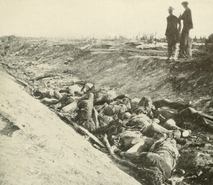 The Cannabis Papers by Publius (2011)
The Cannabis Papers by Publius (2011) The Cannabis Papers: A citizen’s guide to cannabinoids (2011)
By Publius
Green Sunday
Publius’ Green Sunday edition highlights three 2014 PubMed articles on the cannabinoid system (CS) modulating homeostasis. Today’s line-up links to CS PubMed articles discussing: skin homeostasis and cannabinoid lipids, cancer angiogenesis with radiotherapy and CBD/THC, and cannabinoids for neuropathic pain.
One finds some disheartening numbers in the Survey of the Endocannabinoid System in Medical School (July 2014):
“Not one of the medical schools surveyed had a department of endocannabinoid science or an ECS director. None of them taught the endocannabinoid science as an organized course. Only 21 of the 157 schools surveyed had the ECS mentioned in any course. 21/157 = 13.3% In the United States of America, only 13% of the medical schools surveyed teach the endocannabinoid science to our future doctors.”
The good side to such numbers is they can only improve: CS Medical School and we’ll all do better!
I. Skin Homeostasis (Transient Receptor Potential) and Cannabinoids
“In the skin, cannabinoid lipids, whether of endogenous or exogenous origin, are capable of regulating numerous sensory, homeostatic, and inflammatory events. Although many of these effects are mediated by metabotropic cannabinoid receptors, a growing body of evidence has revealed that multiple members of the transient receptor potential (TRP) ion channel family can act as "ionotropic cannabinoid receptors". Furthermore, many of these same TRP channels are intimately involved in cutaneous processes that include the initiation of pain, temperature, and itch perception, the maintenance of epidermal homeostasis, the regulation of hair follicles and sebaceous glands, and the modulation of dermatitis. Ionotropic cannabinoid receptors therefore represent potentially attractive targets for the therapeutic use of cannabinoids to treat sensory and dermatological diseases. Furthermore, the interactions between neurons and other cell types that are mediated by cutaneous ionotropic cannabinoid receptors are likely to be recapitulated during physiological and pathophysiological processes in the central nervous system and elsewhere, making the skin an ideal setting in which to dissect general complexities of cannabinoid signaling.”
TRP Channel Cannabinoid Receptors in Skin Sensation, Homeostasis, and Inflammation.
Caterina MJ.
ACS Chem Neurosci. 2014 Nov 19;5(11):1107-16. doi: 10.1021/cn5000919. Epub 2014 Jun 17.
PMID: 24915599 [PubMed - in process]
Related citations
II. Cancer (Glioma) Angiogenesis and the CS (THC and CBD)
“High-grade glioma is one of the most aggressive cancers in adult humans and long-term survival rates are very low as standard treatments for glioma remain largely unsuccessful. Cannabinoids have been shown to specifically inhibit glioma growth as well as neutralize oncogenic processes such as angiogenesis. In an attempt to improve treatment outcome, we have investigated the effect of Δ9-tetrahydrocannabinol (THC) and cannabidiol (CBD) both alone and in combination with radiotherapy in a number of glioma cell lines (T98G, U87MG, and GL261). … Taken together, our data highlight the possibility that these cannabinoids can prime glioma cells to respond better to ionizing radiation, and suggest a potential clinical benefit for glioma patients by using these two treatment modalities.”
The Combination of Cannabidiol and Δ9-Tetrahydrocannabinol Enhances the Anticancer Effects of Radiation in an Orthotopic Murine Glioma Model.
Scott KA, Dalgleish AG, Liu WM.
Mol Cancer Ther. 2014 Nov 14. [Epub ahead of print]
PMID: 25398831 [PubMed - as supplied by publisher]
Related citations
III. Homeostasis: Neuropathic Pain and the CS
“Treatment options for neuropathic pain have limited efficacy and use is fraught with dose-limiting adverse effects. The endocannabinoid system has been elucidated over the last several years, demonstrating a significant interface with pain homeostasis. Exogenous cannabinoids have been demonstrated to be effective in a range of experimental neuropathic pain models, and there is mounting evidence for therapeutic use in human neuropathic pain conditions. This article reviews the history, pharmacologic development, clinical trials results, and the future potential of nonsmoked, orally bioavailable, nonpsychoactive cannabinoids in the management of neuropathic pain.”
Cannabinoids for neuropathic pain.
Fine PG, Rosenfeld MJ.
Curr Pain Headache Rep. 2014 Oct;18(10):451. doi: 10.1007/s11916-014-0451-2.
PMID: 25160710 [PubMed - in process]
Related citations
Video: HOW and WHY does Cannabis Cure Cancer - Scientific Explanation
Posted by Bryan W. Brickner









 RSS Feed
RSS Feed
